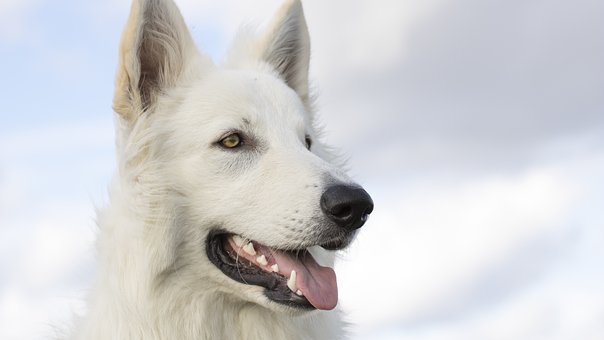Whether you realize it or not, your dog playing with a squeaker toy could be them expressing prey drive. The same goes for them chasing a ball or fetching a stick. When a dog is staring down a squirrel or sniffing along the path where a cat has just been, that is many generations of carnivorous predatory behavior at work.
Prey drive is what motivates carnivores to continue to hunt for their next meal. While pet dogs rarely need to hunt for food, the silent staring, the stalking, the chasing, and the biting (whether to grab or kill) are all part of the prey drive. The prey is usually a small animal, such as a cat, frog, squirrel or bird, but some dogs will hunt deer or even other dogs.
Sometimes these normal prey drive instincts cross into behavior that is not appropriate for modern dog life. When your dog is chasing cats, deer, squirrels, or other small dogs, their strong sense of prey drive poses safety concerns. People, pets, and wildlife can be in danger if a dog’s prey drive escalates and causes them to bite or attack. The good news is, prey drive is quite manageable through safety precautions and training.
Prey drive is what motivates carnivores to continue to hunt for their next meal. While pet dogs rarely need to hunt for food, the silent staring, the stalking, the chasing, and the biting (whether to grab or kill) are all part of the prey drive. The prey is usually a small animal, such as a cat, frog, squirrel or bird, but some dogs will hunt deer or even other dogs.
Sometimes these normal prey drive instincts cross into behavior that is not appropriate for modern dog life. When your dog is chasing cats, deer, squirrels, or other small dogs, their strong sense of prey drive poses safety concerns. People, pets, and wildlife can be in danger if a dog’s prey drive escalates and causes them to bite or attack. The good news is, prey drive is quite manageable through safety precautions and training.
What causes prey drive?
Some dogs are more prone to stubborn and intense prey drive, but it’s logical. For example, Border Collies were bred to have a strong drive to spot, stalk, and chase sheep but stop before they bite. On the other hand, Terriers were bred to chase and kill rodents. Greyhounds, Pit Bulls, Hounds, and Retrievers have all been bred and trained to strengthen their prey drive over many generations to help people with various tasks and activities, such as hunting.
A high level of prey drive can be hard for the average pet parent to manage, but a dog with high prey drive may be well suited as a working dog.
Does prey drive mean my dog is aggressive?
Prey drive is not the same as aggression. While a dog with strong prey drive may also have aggressive behaviors, dogs with high prey drive are not necessarily aggressive. Aggressive behavior is when a dog acts violently due to emotion, such as fear or protectiveness. A dog guarding his food from the cat is acting aggressively. A dog chasing the cat to bite or kill it is displaying prey drive.
Normally, an aggressive dog is trying to get away from the thing that is causing the negative emotion or may try to scare it off by barking or growling. Prey drive is causing a dog to head towards their prey.
Is prey drive dangerous?
Dogs with low prey drive normally don’t pose a risk to those around them, but if you see signs of prey drive (stalking, chasing, or biting other animals) you should use extra caution. Consult with a positive reinforcement trainer to discuss training methods to help your dog moderate their prey drive. If your dog has shown any indication that they may bite, they should be muzzled when around other animals and never permitted to run off-leash. Be especially careful around small children in the home and outside on bikes or skateboards as they can be quite triggering for dogs with prey drive.
Nearly all dogs show some signs of prey drive and normally can satisfy their urges with a game of fetch or tug of war. However, if your dog is showing intense prey drive, it’s time to talk to a professional about remedying this potentially dangerous behavior.



